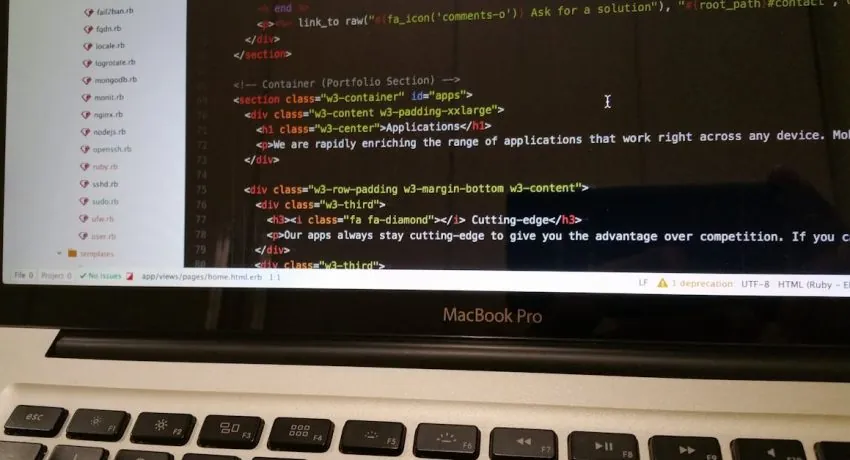Table of Contents
ToggleImagine having a brilliant app idea but feeling like a fish out of water when it comes to coding. Well, guess what? You don’t need to be a tech wizard to turn that dream into reality. Thanks to no-code platforms, anyone can build apps without writing a single line of code. That’s right—it’s like cooking a gourmet meal without ever stepping foot in a culinary school!
No-code tools are shaking up the tech world, making app development accessible to everyone. Whether you’re a business owner wanting to streamline operations or a creative soul looking to share your passion, these platforms empower you to bring your vision to life. So grab your virtual toolbox and get ready to unleash your inner app developer—because who needs coding when you can build apps with a few clicks?
Overview of No-Code Development
No-code development revolutionizes how apps are built. This approach enables anyone to create software applications without needing to write traditional code. Entrepreneurs, marketers, and creatives increasingly choose no-code platforms as they eliminate barriers to entry for building digital products.
Many platforms offer pre-built templates and drag-and-drop functionality, simplifying the development process significantly. By using visual interfaces, users can design user experiences and integrate features intuitively. Popular no-code tools, such as Bubble, Adalo, and Glide, facilitate app creation across various industries.
Cost savings become apparent as businesses can allocate resources previously spent on development to other priorities. It streamlines the workflow, allowing rapid prototyping and iteration. In addition, teams can collaborate more effectively without the complexities of coding, enhancing creativity and innovation.
Individuals can experiment with their app ideas quickly. Feedback loops are shorter, enabling users to adjust their concepts based on real-time insights. The no-code movement empowers a diverse range of problem solvers to deploy their solutions.
Accessibility plays a crucial role; no-code tools cater to different skill levels. This democratization of app development fosters a culture of experimentation and agility. Users enjoy ongoing support from communities and forums dedicated to no-code development, further boosting their confidence in building applications.
Ultimately, the no-code development landscape encourages a shift in how society views technology and creativity. Many people now see themselves as potential developers, ready to bring applications to life with minimal effort. Engaging with no-code platforms opens new possibilities, enabling more dreamers to become doers in the digital space.
Advantages of Building Apps Without Coding
Building apps without coding offers numerous benefits for users across different backgrounds. No expertise is necessary, making it an ideal option for those looking to convert ideas into digital products quickly.
Accessibility for Non-Developers
No-code platforms cater to non-developers by offering intuitive interfaces. Users can design and deploy applications without prior coding knowledge. Access to pre-built templates empowers creators to get started right away. Many platforms include drag-and-drop functionality, simplifying the development process further. Flexibility in functionality allows even individuals with minimal tech experience to navigate their projects confidently. Communities around these tools provide support, sharing tips and resources that enhance user proficiency. Ultimately, these platforms democratize app creation, making technology more inclusive and approachable.
Speed and Efficiency
Building apps without coding significantly enhances speed and efficiency. Users can prototype ideas and iterate quickly, leading to faster time-to-market. Streamlined workflows enable simultaneous collaboration among team members. Multiple integrations with existing software increase workflow coherence. With built-in testing functions, users can gather feedback and make adjustments in real-time. Reduced development time translates to lower costs for businesses, allowing more funds to be allocated to growth initiatives. This approach to app development fundamentally transforms traditional timelines, fostering a more agile environment.
Popular No-Code Tools
No-code tools simplify app development, enabling users to transform ideas into functional applications quickly. These platforms provide diverse features catering to different needs.
Tool A: Features and Use Cases
Bubble offers a powerful drag-and-drop interface, allowing users to design complex web applications. This platform excels in handling responsive design, making it suitable for businesses that require customized solutions. Entrepreneurs can create marketplaces or social networks easily, promoting flexibility in deployment. Users benefit from its extensive plugin ecosystem, enhancing functionality without technical skills.
Tool B: Features and Use Cases
Adalo stands out with its focus on mobile app development. Users appreciate its intuitive design interface, allowing for swift creation of apps for iOS and Android. This platform includes pre-built components such as navigation bars and user authentication, simplifying the development process. Creatives often use Adalo to build interactive prototypes, showcasing app ideas simply and effectively.
Tool C: Features and Use Cases
Glide focuses on turning Google Sheets into powerful applications. Users find this approach unique, as it transforms spreadsheets into functional apps seamlessly. The platform supports various features, including real-time data updates and easy sharing with teams. Businesses frequently use Glide for internal tools, improving efficiency without coding complexities.
Challenges of No-Code Development
Despite the advantages, no-code development poses challenges that users should consider.
Limitations in Customization
Customization capabilities often restrict extensive tailoring of applications. Pre-built templates can hinder creativity, making it difficult to implement unique features. Users may encounter scenarios where specific needs aren’t met by the available options. Complex functionalities might require workarounds, reducing development efficiency. While no-code platforms cater to many use cases, they sometimes lack advanced customization that professional developers provide. For instance, businesses focused on niche markets may find their requirements unaddressed. Ultimately, navigating these limitations requires strategic planning and potentially additional resources.
Integration Issues
Integration with existing systems presents another challenge for users. Many no-code platforms struggle to connect seamlessly with third-party applications. Users frequently find compatibility issues, leading to inefficiencies and data silos. An example includes incompatible APIs that limit the flow of information between tools. Without robust integration capabilities, teams face collaboration hurdles, diminishing the overall effectiveness of their applications. While no-code solutions emphasize ease of use, users often prioritize the importance of comprehensive integration in their workflows. Addressing these issues is crucial for maximizing the potential of no-code development.
Future of No-Code Development
The future of no-code development looks promising, with ongoing advancements set to redefine the landscape of app creation. Increased accessibility to no-code platforms will empower more people to become app creators, regardless of their technical backgrounds. Enhanced data analytics tools integrated into these platforms will facilitate deeper insights, allowing users to make data-driven decisions while developing applications.
Growth in AI capabilities seamlessly integrates into no-code tools, streamlining user experiences by automating repetitive tasks. These improvements will expand functionality, enabling users to implement advanced features without extensive programming knowledge.
Emerging trends indicate a rise in community-driven resources, providing platforms for user collaboration and shared learning. These spaces allow users to exchange ideas, troubleshoot issues, and support each other in their app development journeys.
Big companies are investing in no-code solutions, recognizing the potential to accelerate innovation cycles. Adoption among enterprises indicates a shift in traditional development practices towards more agile methodologies.
Increased focus on security will also shape no-code development, as platforms must meet the growing demand for secure, compliant applications. Robust security features will become a standard expectation, ensuring users can trust these tools with their sensitive data.
As the no-code movement continues to evolve, its impact on the tech landscape will redefine how individuals and businesses approach app development. Users will increasingly rely on no-code platforms for digital transformations, leading to a surge in unique applications and innovative solutions across various industries.
Conclusion
The no-code movement is transforming how individuals approach app development. By removing technical barriers it empowers a diverse range of creators to turn their ideas into reality. With platforms that offer user-friendly interfaces and community support the potential for innovation is limitless.
As technology continues to evolve the accessibility of no-code tools will only increase. This shift encourages more people to explore their creativity and develop applications that meet their unique needs. Embracing no-code development not only streamlines processes but also fosters a culture of experimentation and collaboration.
Ultimately the future of app creation is bright and inclusive. With no-code solutions at their fingertips individuals can confidently navigate the digital landscape and bring their visions to life.




